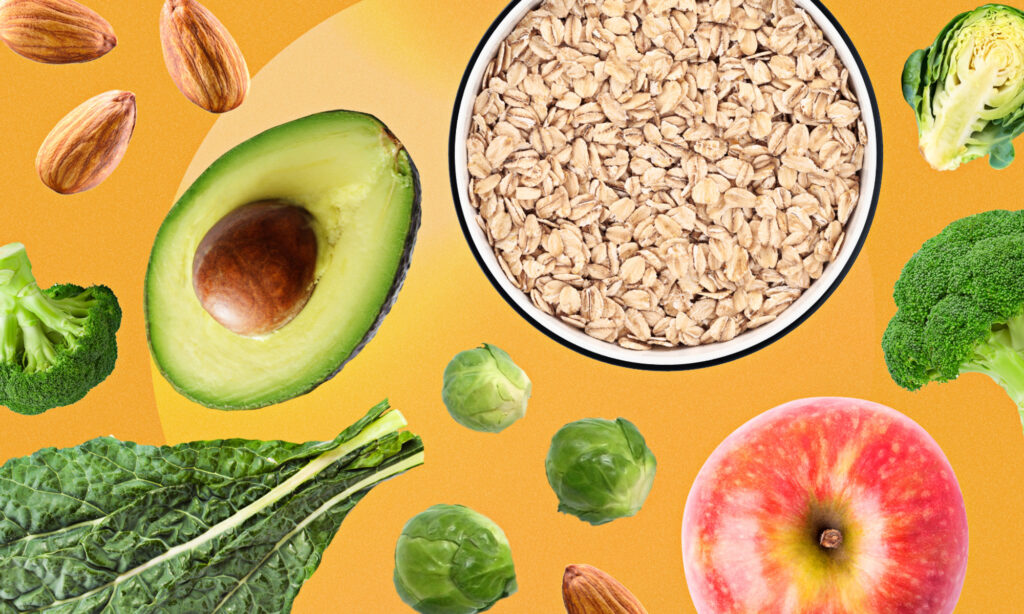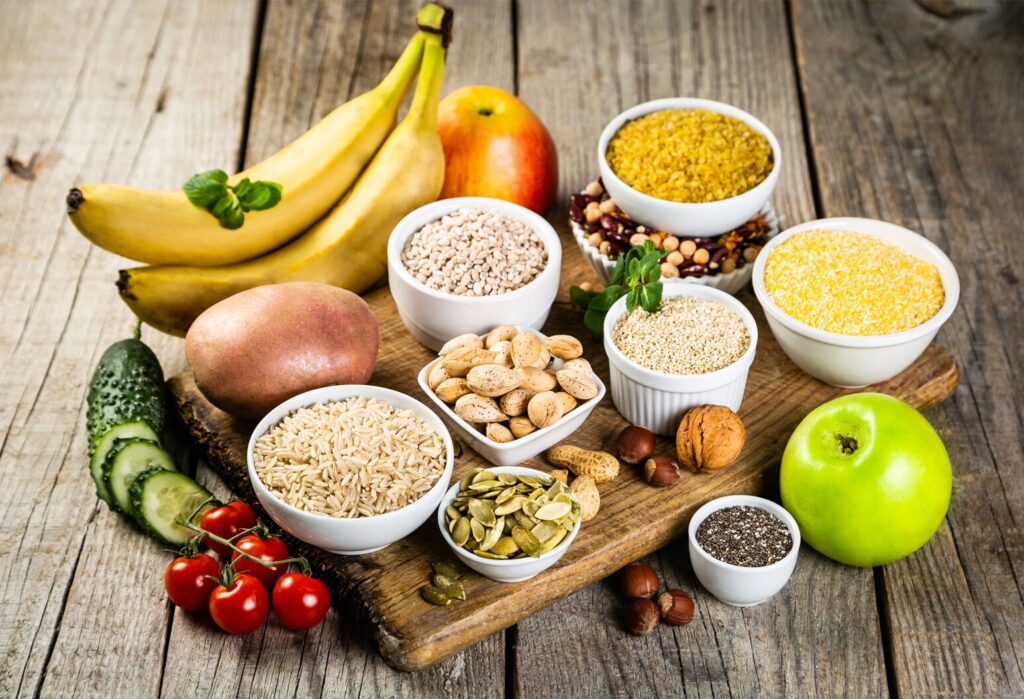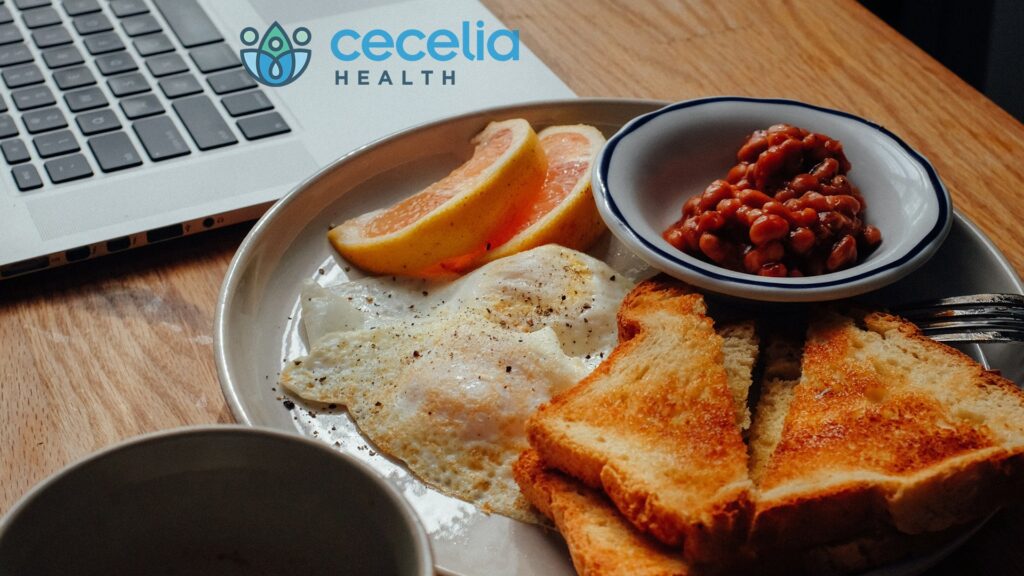Fiber. It’s a word we hear often, attached to breakfast cereals, health foods, and dietary advice. But often, it’s a concept that remains somewhat vague. We know it’s “good for us,” but the “why” and “how” of fiber often get lost in the noise. This deep dive explores the fascinating world of dietary fiber, delving into its composition, diverse types, crucial role in digestive health and satiety, impact on overall well-being, and practical ways to incorporate more of this unsung hero into our daily diet.
What Exactly is Fiber? A Deeper Look at its Composition
Dietary fiber, also known as roughage or bulk, is a type of carbohydrate that our bodies cannot digest or absorb. Unlike other carbohydrates like sugars and starches, fiber passes relatively intact through the digestive tract. This indigestibility is the defining characteristic that gives fiber its unique and invaluable health benefits.
Fiber is primarily composed of the non-starch polysaccharides found in plant cell walls. These complex carbohydrates resist breakdown by the digestive enzymes in our small intestine. Structurally, fibers are long chains of sugar molecules linked together in ways that make them resistant to enzymatic hydrolysis.
However, defining fiber can be surprisingly complex. Historically, the focus was on the indigestible residue left after laboratory digestion. More recently, the Association of Official Analytical Chemists (AOAC) defined dietary fiber as “the edible parts of plants or analogous carbohydrates that are resistant to digestion and absorption in the human small intestine, with complete or partial fermentation in the large intestine.” This definition acknowledges the importance of fermentation by gut bacteria, a crucial process for many types of fiber.

Two Sides of the Same Coin: Soluble vs. Insoluble Fiber
Fiber isn’t a monolithic entity; it exists in a variety of forms, primarily classified as either soluble or insoluble. These categories are defined by their behavior in water and their effect on the digestive system:
- Soluble Fiber: This type of fiber dissolves in water, forming a gel-like substance in the digestive tract. This gel slows down digestion, delaying gastric emptying (the rate at which food leaves the stomach) and slowing the absorption of glucose (sugar) from the intestines. Think of it as a sponge that soaks up water and creates a thicker mixture. Common sources of soluble fiber include oats, barley, legumes (beans, lentils, peas), apples, citrus fruits, and psyllium.
- Insoluble Fiber: This type of fiber does not dissolve in water. Instead, it adds bulk to the stool, helping to speed up the passage of food through the digestive system. It acts like a “broom,” sweeping waste and toxins through the intestines. This type of fiber can be found in whole wheat products, wheat bran, vegetables like cauliflower and green beans, nuts, and seeds.
While this classification is helpful, it’s important to remember that many foods contain a combination of both soluble and insoluble fiber. Consuming a diverse range of plant-based foods is the best way to ensure you’re getting a balanced intake of both types.

The Digestive Dynamo: Fiber’s Impact on Gut Health
The digestive system is where fiber truly shines. Its presence impacts everything from transit time to the composition of the gut microbiome, the complex community of bacteria and other microorganisms residing in our intestines.
- Promoting Regularity and Preventing Constipation: Insoluble fiber is a key player in promoting regular bowel movements. By adding bulk to the stool, it stimulates peristalsis, the rhythmic contractions of the intestinal muscles that propel waste through the digestive tract. This helps to prevent constipation and keeps things moving smoothly. Conversely, soluble fiber, by absorbing water, can also help solidify loose stools in cases of diarrhea.
- Nourishing the Gut Microbiome: Many types of fiber, especially soluble fiber, are fermented by the beneficial bacteria in the colon. This fermentation process produces short-chain fatty acids (SCFAs) like butyrate, acetate, and propionate. These SCFAs are essential nutrients for the cells lining the colon, contributing to gut health in numerous ways.
- Butyrate: This SCFA is the primary fuel source for colonocytes (colon cells). It helps maintain the integrity of the gut lining, reduces inflammation, and may play a role in preventing colon cancer.
- Acetate and Propionate: These SCFAs are absorbed into the bloodstream and can affect various metabolic processes, including glucose and lipid metabolism.
- Protecting Against Diverticulitis: Diverticulitis is a condition characterized by small pouches (diverticula) that form in the lining of the colon. When these pouches become inflamed or infected, it can cause abdominal pain, nausea, and other symptoms. A high-fiber diet can help prevent diverticulitis by promoting regular bowel movements and reducing pressure within the colon, thereby reducing the risk of pouch formation.
- Reducing Risk of Hemorrhoids: Hemorrhoids are swollen veins in the anus and rectum that can cause pain, itching, and bleeding. Straining during bowel movements is a major risk factor for hemorrhoids. By adding bulk to the stool and promoting regular bowel movements, fiber can reduce the need to strain, thereby lowering the risk of developing hemorrhoids.

The Satiety Secret: Fiber’s Role in Weight Management
Fiber is a valuable tool for weight management due to its impact on satiety, the feeling of fullness and satisfaction after eating.
- Increased Satiety: Both soluble and insoluble fiber contribute to satiety. Soluble fiber slows down digestion and the absorption of nutrients, leading to a more sustained release of energy and a prolonged feeling of fullness. Insoluble fiber adds bulk to food, which can help to stretch the stomach and trigger satiety signals to the brain.
- Reduced Calorie Intake: Because fiber promotes satiety, it can help individuals eat less overall. This can be particularly beneficial for those trying to lose weight or maintain a healthy weight. Foods high in fiber often require more chewing, which further slows down the eating process and allows the body more time to register fullness.
- Impact on Blood Sugar Control: Soluble fiber plays a crucial role in regulating blood sugar levels. By slowing down the absorption of glucose from the intestines, it prevents rapid spikes in blood sugar after meals. This is particularly important for individuals with diabetes or insulin resistance, as it helps to improve glycemic control and reduce the risk of complications.

Beyond Digestion and Weight: The Wider Health Benefits of Fiber
The benefits of fiber extend far beyond the digestive system and weight management, impacting numerous aspects of overall health and well-being:
- Heart Health: Studies have shown that a high-fiber diet can help lower LDL (“bad”) cholesterol levels. Soluble fiber binds to cholesterol in the digestive tract, preventing its absorption into the bloodstream. This can help reduce the risk of heart disease and stroke.
- Diabetes Prevention and Management: As mentioned earlier, soluble fiber helps to regulate blood sugar levels, making it a valuable tool for both preventing and managing diabetes. By preventing rapid spikes in blood sugar, it reduces the demand on the pancreas to produce insulin, helping to preserve insulin sensitivity.
- Cancer Prevention: Research suggests that a high-fiber diet may reduce the risk of certain types of cancer, particularly colon cancer. Fiber promotes regular bowel movements, reducing the amount of time that potential carcinogens remain in contact with the colon lining. Furthermore, the SCFAs produced by the fermentation of fiber in the colon may have anti-cancer properties.
- Immune Function: The gut microbiome plays a critical role in immune function. By nourishing the beneficial bacteria in the gut, fiber helps to support a healthy and balanced microbiome, which in turn strengthens the immune system and reduces the risk of infection.

Incorporating Fiber into Your Diet: Practical Strategies
While the benefits of fiber are undeniable, many people struggle to meet the recommended daily intake. The current recommendations are around 25-30 grams of fiber per day for adults. Here are some practical strategies to increase your fiber intake:
- Embrace Whole Grains: Swap refined grains (white bread, white rice, pasta) for whole grains (whole wheat bread, brown rice, quinoa, oats). Look for products that list “whole wheat” or “whole grain” as the first ingredient.
- Load Up on Fruits and Vegetables: Fruits and vegetables are excellent sources of both soluble and insoluble fiber. Aim to eat a variety of colorful fruits and vegetables every day. Leave the skins on apples, pears, and other fruits (when appropriate) to maximize fiber intake.
- Legumes are Your Friends: Beans, lentils, and peas are nutritional powerhouses, packed with protein, fiber, and other essential nutrients. Add them to soups, salads, stews, or enjoy them as a side dish.
- Choose High-Fiber Breakfast Cereals: Look for breakfast cereals that contain at least 5 grams of fiber per serving. Add berries or nuts to boost the fiber content even further.
- Snack Smart: Instead of processed snacks, opt for fruits, vegetables with hummus, nuts, or seeds.
- Read Food Labels: Pay attention to the fiber content listed on food labels and choose products that are higher in fiber.
- Gradual Increase: It’s important to increase your fiber intake gradually to avoid digestive discomfort such as bloating, gas, and cramping. Drinking plenty of water is also crucial, as fiber absorbs water and helps to prevent constipation.
- Consider a Fiber Supplement: If you find it difficult to get enough fiber from food alone, you may consider taking a fiber supplement. However, it’s always best to prioritize food sources of fiber whenever possible, as they also provide a wealth of other nutrients.
Conclusion: Making Fiber a Cornerstone of a Healthy Lifestyle
Dietary fiber is an essential nutrient that plays a crucial role in digestive health, satiety, and overall well-being. From promoting regularity and nourishing the gut microbiome to lowering cholesterol and reducing the risk of chronic diseases, the benefits of fiber are undeniable. By incorporating a variety of high-fiber foods into your diet, you can reap the numerous health benefits that this unsung hero has to offer. Remember to increase your intake gradually, drink plenty of water, and prioritize whole, plant-based foods. Making fiber a cornerstone of your healthy lifestyle is a simple yet powerful step you can take to improve your health and well-being for years to come. The indigestible nature of fiber is precisely what makes it so invaluable, acting as a true champion for our gut and our overall health.